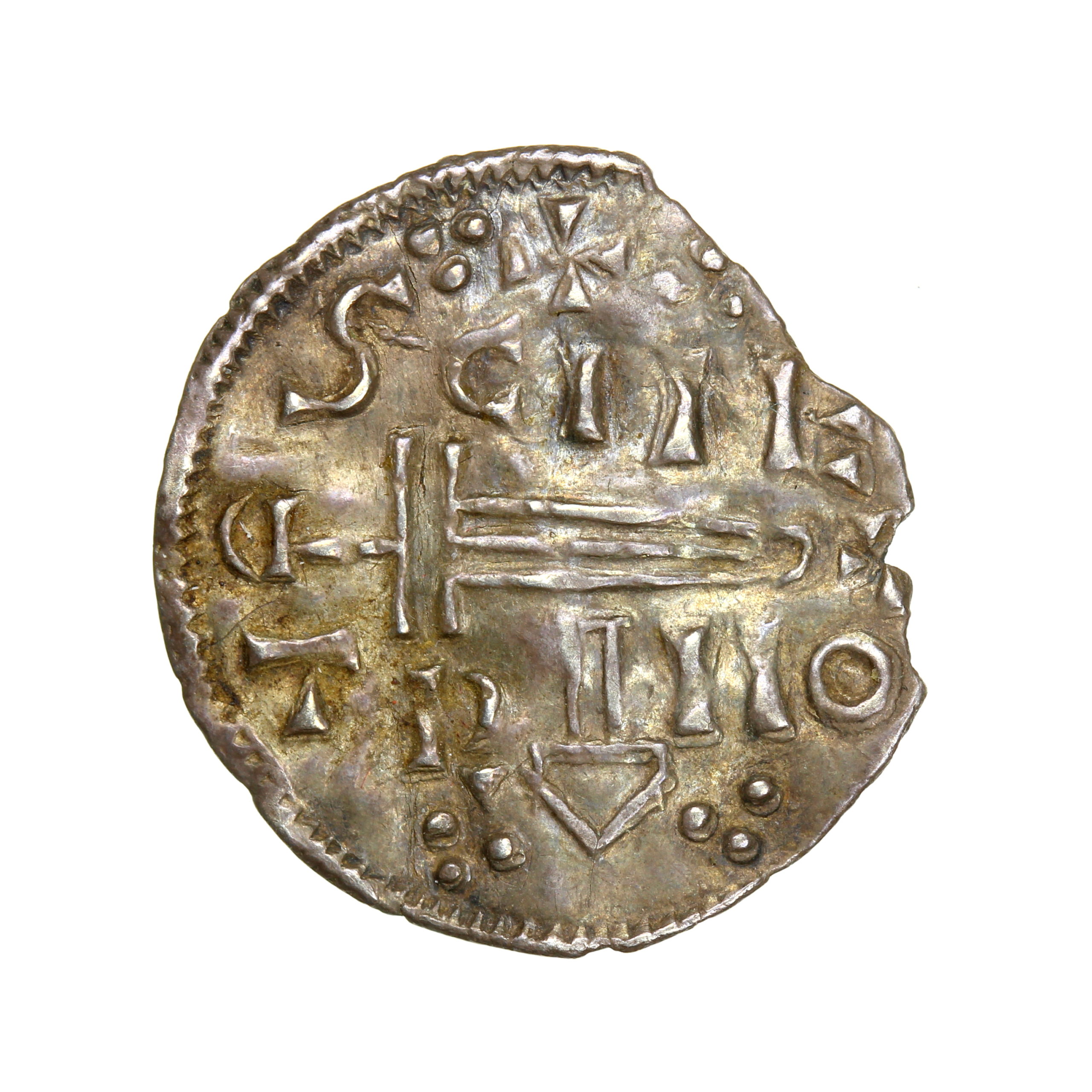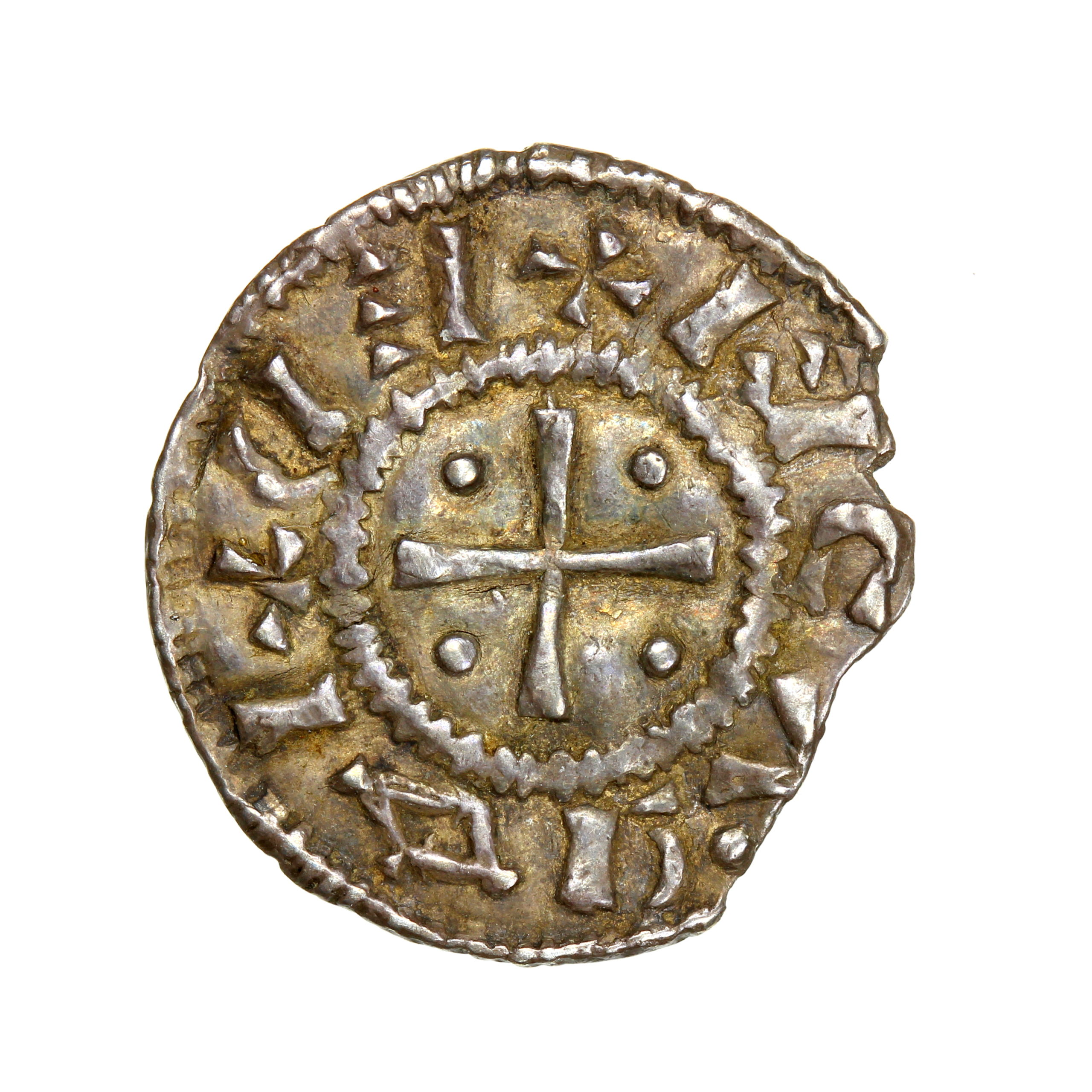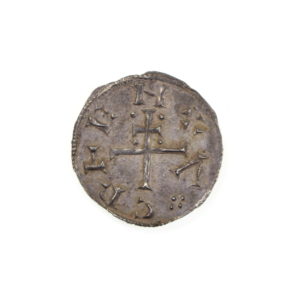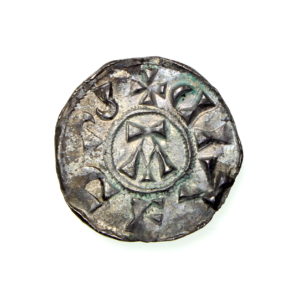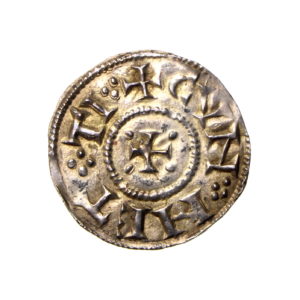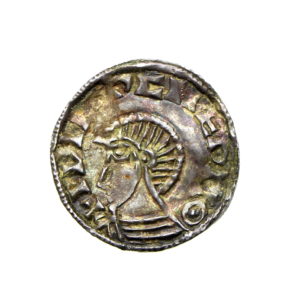Vikings or York 919-925AD St Peter coinage Silver Penny
£2,950.00
Vikings or York 919-925AD St Peter coinage Silver Penny, Sword type
S1014, 18x19mm, 1.14g. The iconic ‘Sword type’ penny, rare in any grade.
This coin comes with several old tickets and was once a part of the C. F. Lyon collection.
Swords and Saints
From c. 905 into the 920’s, a series of coins was struck which perhaps consist some of the most recognisable ‘Viking’ coins made in England – immortalised to this day at the Jorvik Centre in York and sold by the hundreds as replicas there. These are the so-called ‘St Peter’ pennies, a complex issue that is perhaps best notable for its large number of die-variants. While the obverses usually display a version of the Latin inscription ‘SANCTUS PETRI’ (St Peter), the reverses vary considerably, depicting images which blend the lines between promoting Christianity and Paganism. One type combines a cross as the central motif on the obverse with a hammer (the symbol of the god Thor) on the reverse, while another places a cross in both central fields but utilises the hammer motif as a spacer in the reverse legend. Yet more variants display images of everyday objects very familiar to the ‘Viking’ inhabitants of York, such as keys and swords – objects also burdened with religious symbolism in both Christian and Pagan narratives. Although the ‘St Peter’ issues of York are the most commonly encountered, there is another (though much rarer) struck at Lincoln – the so-called ‘St Martin’ type. This is perhaps good evidence that coinage was issued outside the core areas of York and East Anglia, if infrequently.
How best to interpret the conflicting symbolism on these coins? One suggestion is that these represent the process of assimilation that took place in England from the early years of the 10th century, whereby pagans were perhaps encouraged to worship their gods in Christian guises – e.g. Thor as the equivalent of St Peter. In a similar fashion (and probably at the same time) many characteristically ‘pagan’ practices began to enter the Christian liturgy – such as the concept of the honeymoon, celebration of Yule, decorating of trees, gift-giving, feasting and drinking at Christmas. Although Hollywood enjoys depicting paganism versus Christianity as an aggressive conflict, in reality it was often a slow process of gradual change that to modern eyes seems surprisingly permissive.
Out of stock

